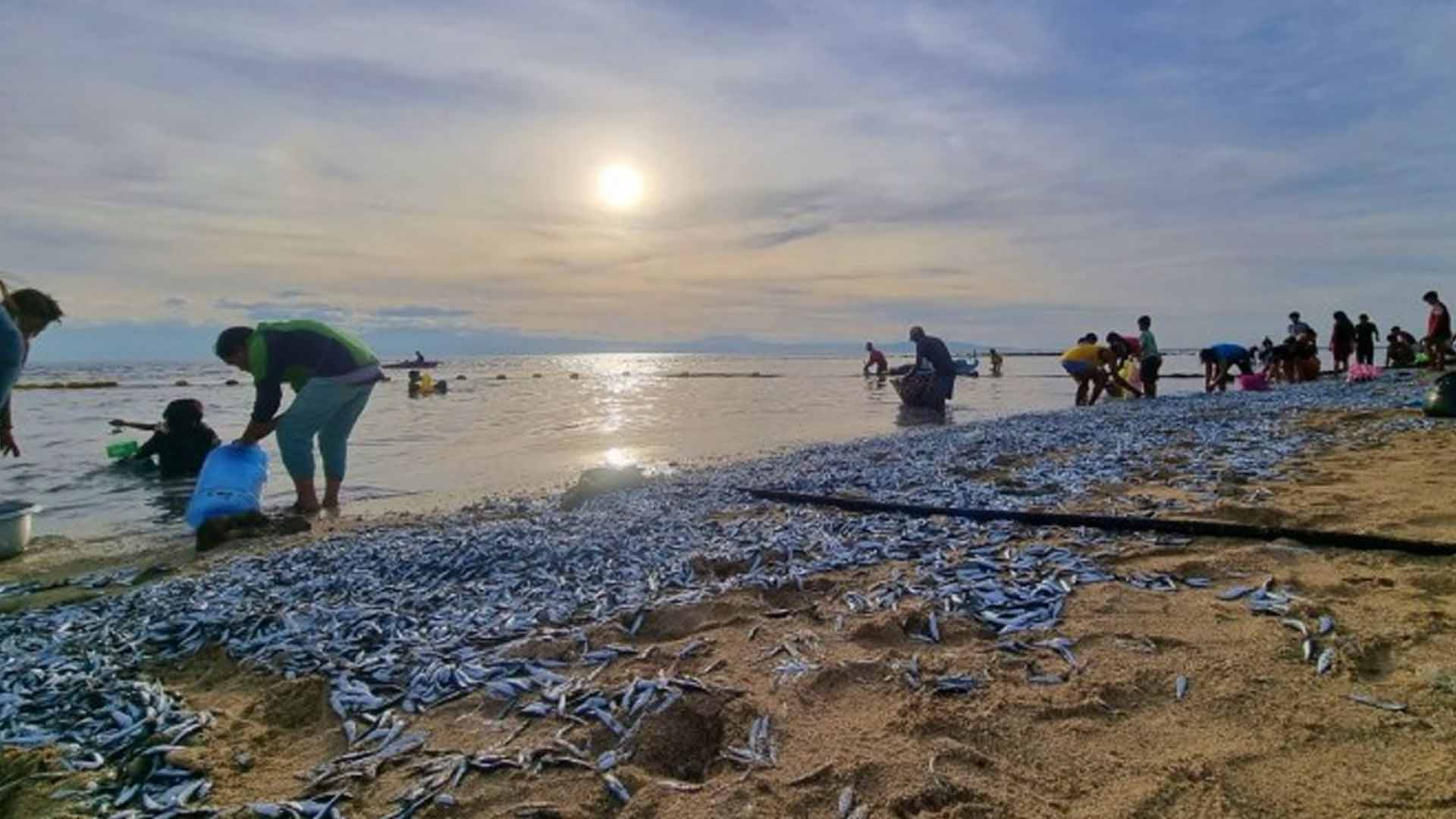The beaching of juvenile pelagic sardines is not necessarily a sign of underwater seismic activity but is a natural phenomenon, an environment science research specialist, said Monday.
Cirilo Lagnason Jr., a researcher from the Department of Environment and Natural Resources-Soccsksargen Region (DENR-12), said the large number of sardines that appeared along the coast of Barangay Tinoto in Maasim, Sarangani province on Sunday was due to a natural occurrence known as upwelling.
“This may be a result of upwelling, an ocean process in which colder water is pushed towards the ocean surface, bringing nutrients, including plankton, the diet of these juvenile fish,” Lagnason said.
“As a result, the fish were trapped in shallower areas, making them easier to catch,” he added.
He said this phenomenon is also common in Zamboanga, Masbate and Maguindanao del Norte provinces.
“These fish may still be edible as long as they are consumed immediately or preserved,” he said.
Residents of Tinoto described the deluge of sardines as a blessing that must be shared with everyone.
“What is better than a morning with the bountiful school of fish flooding the shoreline? Indeed, a bountiful Sarangani Bay,” Lagnason, also the concurrent DENR-12 development management officer, said.
Mark Baya, a resident of Maasim, feared a new calamity was upcoming and the beaching of the sardines could be an “advance notice.”
“My fear may be baseless, but who knows,” Baya said.
In October 2021, a huge number of medium-sized yellowfin tuna were also beached along the coast of Barangay Nalkan, Datu Blah Sinsuat, Maguindanao del Norte. (PNA)






















